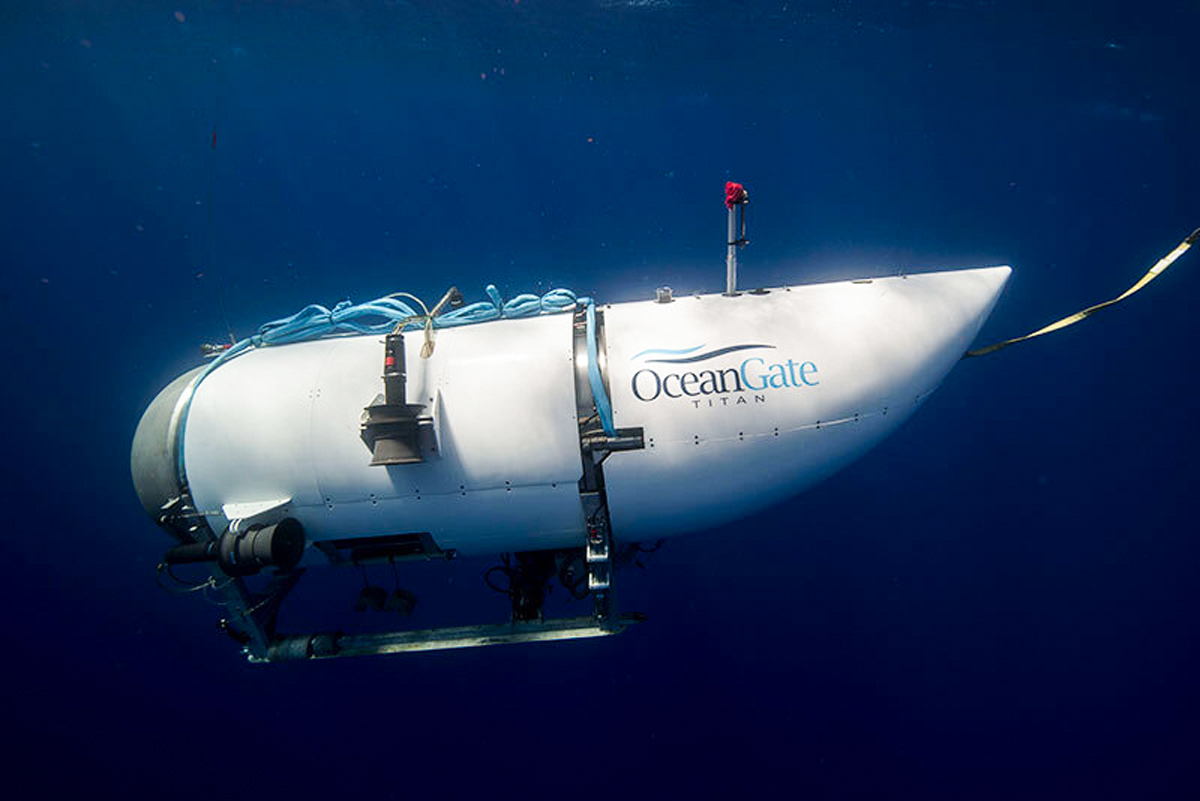Stockton Rush, CEO of the private deep-sea expedition company OceanGate, previously implied that the Titan submersible was "pretty much invulnerable."
He is among the five people missing since Sunday after communication was lost with control operators, joined by French submersible pilot Paul-Henry Nargeolet, billionaire British explorer Hamish Harding, Pakistani businessman Shahzada Dawood and his son, Suleman Dawood. The rescue mission for the vessel that attempted to visit the Titanic wreck some 13,000 feet deep in the Atlantic Ocean has drawn worldwide attention.
In an April 2017 interview with CBS News, Rush, 61, described the Titan as a "Cyclops 2" five-person submersible able to reach such depths. The OceanGate website states that the vessel "is a Cyclops-class manned submersible designed ... for site survey and inspection, research and data collection, film and media production, and deep-sea testing of hardware and software."
OceanGate CEO Stockton Rush: “By the time we’re done testing it, I believe it’s pretty much invulnerable.”
— Ashton Pittman 🏳️🌈 (@ashtonpittman) June 21, 2023
Interviewer: “And that’s pretty much what they said about the Titanic.”pic.twitter.com/WZWy5TTtgR
"By the time we're done testing it, I believe it's pretty much invulnerable," Rush told CBS News correspondent Chip Reid more than six years ago.
"And that's pretty much what they said about the Titanic," Reid replied.
"That's right," Rush said. "But I will go on all the first dives and probably every third dive. So, I'll put my money where my mouth is."

Rush's company was sued in 2018 by David Lochridge, a former OceanGate employee and submersible pilot. The lawsuit alleged that passengers were being subjected "to potential extreme danger in an experimental submersible" due to "OceanGate's refusal to conduct critical, non-destructive testing of the experimental design of the hull."
While the suit was settled out of court, the Manned Underwater Vehicles committee of the Marine Technology Society sent a letter to Rush that same year. It warned that his refusal to allow testing by an outside entity was ignoring "a critical component in the safeguards that protect all submersible occupants," according to a copy of the letter obtained by The New York Times.
More than three dozen field experts reportedly co-signed the letter, calling Rush's intentions "misleading" and a potential hazard to passengers' safety. They called the vessel itself "experimental" and breaching "an industry-wide professional code of conduct" by refusing routine marine safety standard tests like DNV or ABS.
Rush reportedly rejected the concerns, accusing the field experts of "stifling innovation."
A similar statement was made in a 2019 OceanGate blog post, saying that "bringing an outside entity up to speed on every innovation before it is put into real-world testing is anathema to rapid innovation."
Mike Reiss, former writer on The Simpsons who boarded the submersible just last year, told BBC Breakfast how small the craft is and how things can go wrong—adding that communication was lost during all three of his dives, including on expeditions to the Titanic.
During an interview last year with CBS News' David Pogue, Rush said the biggest worry of his was facing "things that will stop me from being able to get to the surface."
Rush partook in two Titanic expeditions prior to the current trip, according to the New York Post.








